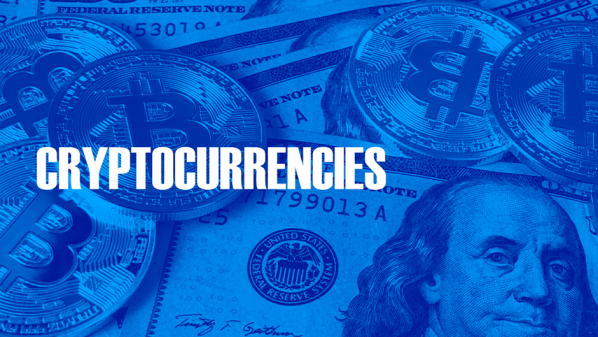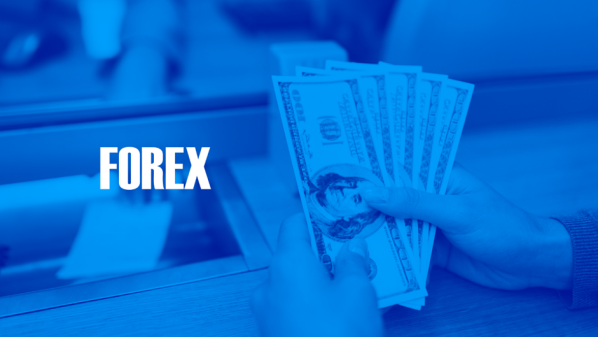
U.S stocks fell for a fifth straight week, the longest slump in 11 years, as Friday's strong jobs report added fuel to lingering fears of high inflation. The S&P 500 closed down 0.6% on Friday and was down 0.2% for the week, its first five-week losing streak since 2011.
Nine of the benchmark's 11 major industry sectors were lower, led by losses in materials, communications services and consumer discretionary. Energy and utility stocks rose. The Nasdaq 100 fell 1.2 percent, its longest weekly loss since 2012, while the Dow Jones Industrial Average fell 0.2 percent for its sixth straight weekly loss.
Stocks appear to have been on a roller coaster ride as investors continue to debate signs of a strong economy amid higher interest rates, which remain a drag on highly valued companies, said senior market analyst Ed Moya.
When the U.S stock market reversed sharply after the initial three-day winning streak, the decline in just two days exceeded the gains previously recorded. This is also a continuation of the overall downturn in the stock market this year. Investors are worried that the Fed's rapid rate hikes in the coming months will tip the U.S economy into recession. Friday's jobs report showed nonfarm payrolls rose more than expected in April, while the labor force participation rate fell to 62.2%.

Block (NYSE: SQ) reported first-quarter adjusted earnings of 18 cents a share, 20 cents below consensus estimates, and first-quarter revenue of $3.96 billion, below consensus estimates of $4.1 billion. The company cited lower bitcoin revenue as the reason for the loss. Excluding bitcoin, total net income for the first quarter would have risen 44% to $2.23 billion; gross profit was about $1.29 billion, up 34% over the same period, in line with market expectations.
DoorDash (NYSE: DASH), an American food delivery company, reported first-quarter revenue of $1.456 billion, up 35% from $1.077 billion in the same period last year, exceeding analyst expectations. The value of orders placed on the company's platforms rose 25% to $12.35 billion in the quarter, beating analysts' expectations of $11.7 billion. Order value more than tripled compared to the same period a year earlier.
Virgin Galactic (NYSE: SPCE) said it will delay the timing of its first commercial spaceflight service until the first quarter of 2023 due to a supply chain crisis and labor constraints.
On May 6, 2022, NIO announced that it has obtained a conditional listing qualification letter from the Singapore Exchange for a secondary listing on the main board, and will issue a listing document this month. After completing the listing on the SGX, NIO will become the first electric vehicle company listed in the United States, Hong Kong and Singapore.

The largest cryptocurrency by market cap fell to $35,694 on Friday, down 9.1% in a day. Other cryptocurrencies were also hit hard. The second-largest ether was also down about 8.3% on the day. The Fed said it would raise interest rates by half a percentage point on Thursday, sparking a sell-off in stocks and cryptocurrencies. This shows that cryptocurrencies are increasingly in sync with tech stocks.
Bitcoin (BTC) dipped below a short-term uptrend as momentum signals turned negative. The cryptocurrency could fall further to $30,000, near the bottom of its one-year trading range. Bitcoin has failed to hold $40,000 over the past few months, down 47% from its all-time high of around $69,000 set in November. The long-term uptrend has weakened, suggesting that the upside this year remains limited. On the weekly chart, BTC is at risk of falling below the 100-week moving average at $36,247. A second weekly close below this level could create a downside target at $30,000.
Overall, bearish sentiment continues to prevail as the Fed looks to slow inflation at all costs. This has resulted in a stronger correlation between stocks and cryptocurrencies over the past six months.

Gold prices rose slightly on Friday, with spot gold closing at $1,883.38 an ounce, but fell for the third week in a row, due to the prospect of a sharp interest rate hike by the Federal Reserve. U.S bond yields climbed and stronger-than-expected U.S jobs data was seen to justify a larger rate hike, capping gold's upside.
Darin, president of Newsom Analysis, said the Federal Reserve remains the most aggressive central bank in the global economy, and there is fundamentally no reason for the dollar to peak now. The employment situation is stable and the economy is supported, so there is no reason for the Fed to stop raising interest rates. This will continue to support the dollar. Gold prices will move higher in the short term, as technically oversold. However, the root cause of the end of gold's decline currently does not exist.
The CEO of asset management company Adrian Day analyzed that monetary policy will also push up the price of gold in the short term. Monetary conditions remain favorable, the Fed sounds hawkish, but it is tightening too little and too late. Rising volatility in U.S stocks also supported a bullish outlook for gold prices next week. Initially, it was common for gold to be used as a source of liquidity when the stock market fell, and gold became a safe haven and insurance against falling asset prices.

This week, WTI oil and Brent crude oil both rose more than 6%, and rose for the second week in a row. The European Union is about to impose sanctions on Russian oil, which is part of the EU's toughest sanctions plan to date against Russia due to the conflict in Ukraine. That could lead to tighter supplies, while traders shrugged off worries about global economic growth.
Three EU sources said the bloc was fine-tuning its sanctions plan, hoping to win the backing of countries with reservations to get the unanimous consent of the 27 member states needed to implement the plan. The original proposal called for the EU to stop imports of Russian crude and refined products by end of the year.
OPEC+ group of allies including the Organization of the Petroleum Exporting Countries (OPEC) and Russia, agreed on Thursday to raise its output target for June by 432,000 barrels a day, ignoring calls from the West to speed up output increases. Analysts expect a much smaller increase in actual output from the alliance due to capacity constraints. A U.S Senate committee on Thursday passed a measure that could expose OPEC+ to lawsuits for conspiring to push up crude oil prices.
Investors expect U.S demand to pick up this fall as Washington unveils plans to buy 60 million barrels of crude to replenish emergency reserves. However, signs of weakness in the global economy added to demand concerns, capping gains in oil prices.

The U.S dollar edged higher on Friday, extending Thursday's gains and rising for a fifth straight week, its longest streak since November. U.S employment data was mixed, failing to change expectations for the Fed's path to rate hikes. Data on Friday showed that U.S. jobs rose more than expected in April. Average hourly earnings rose 0.3% after rising 0.5% in March, bringing the year-on-year increase in wages down to 5.5% from 5.6% in March. Long-term U.S Treasury yields resumed rising, with 10-year and 30-year yields rising to the highest since 2018, and 10-year Treasury yields once rose 10 basis points to 3.134%.
Economist Rubeela Farooqi said that nonfarm payrolls increased by 428,000 in April, the same as the previous month, and the unemployment rate remained at 3.6%, but the employment participation rate fell. These data will not change the Fed's policy outlook and interest rates in the short term. Market analyst Peter Cardillo said the good news was that wages were not rising as fast as they used to, which should start to quell the speculation. Markets will have to recognize that perhaps inflation is peaking.
EUR/USD rose 0.05% to 1.0543 on Friday, after rising as much as 0.5% earlier. The euro was boosted by relatively hawkish comments from European Central Bank officials on Friday. ECB Governing Council member and Bank of France President Villeroy de Gallo said the ECB should raise the deposit rate to positive this year. His comments suggest he supports at least three rate hikes in 2022.
OneProSpecial Analyst
Buy or sell or copy trade crypto CFDs atwww.OneProglobal.com
The foregoing is a personal opinion only and does not represent any opinion ofOneProGlobal, nor is there any guarantee of reliability, accuracy or originality in the foregoing.
Forex and CFD trading may pose a risk to your invested capital.
Before making an investment decision, investors should consider their own circumstances to assess the risks of investment products. If necessary, consult a professional investment advisor.
www.oneproglobal.com
Leave a Reply